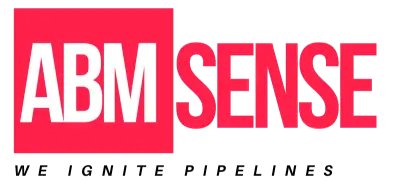What’s the Best Way to Use Chatbots for B2B Demand Gen?
In today’s online sales environment, companies are increasingly asking, “What’s the Best Way to Use Chatbots for B2B Demand Gen?” As businesses look to increase lead generation, chatbots have become an ever more likely part of the conversation. These AI tools are already really good at making 24/7 connections with customers and capturing all kinds of leads. A recent Gartner study predicts that by 2025, 75% of all customer interactions will be handled by AI. So, yes, chatbots are becoming a bigger and bigger deal.
Understanding Chatbots in B2B Demand Generation
Chatbots serve a purpose that goes way beyond customer service. In the realm of B2B demand generation, they are the first point of contact in the conversation with prospects. When initial conversations can be automated, it is an efficient way to engage with a potential lead. And with Drift claiming that 64% of internet users see having a chatbot for 24/7 service as the best feature, you can bet that these always-on virtual assistants will continue to be a force in lead engagement.
In addition, using chatbots in your demand gen strategy can take your engagement metrics to the next level. Here are a few ways that chatbots can better your B2B demand generation.
- Instant Engagement: Chatbots give prompt answers to questions, and this cuts down on how many people leave landing pages without interacting.
- Lead Qualification: They can pre-qualify leads according to designated standards, conserving time for the sales team.
- Information Gathering: Chatbots can collect invaluable information regarding user behavior and inclinations. This allows for much better precision in the targeting of marketing efforts.
Data collection can happen in a number of ways. More obvious methods include asking direct questions of the users, often in the preliminary stages of a conversation when they are more inclined to share such information.
Additionally, personalized communication can be boosted by chatbots, making prospects feel understood and valued.
What’s the Best Way to Use Chatbots for B2B Demand Gen?
Establishing the best way to use chatbots for B2B demand gen requires careful planning. These practices are among the best:
- Establish Your Goals: Commence with precise targets. Is your aim to amp up the tally of potential customers, to boost customer interaction, or to make the conversion process more efficient?
- Select the Right Platform: Choose a platform for your chatbot that integrates completely with the tools you are already using, like your CRM and your marketing automation platform.
- Chatbot Customization: Personalize the dialogues of your chatbot to address the precise pain points your target audience has. This kind of, um, let’s call it an upgrade, can increase your engagement rates significantly.
- Oversee and Improve: Keep a constant watch over chatbot performance, using not just one, but several metrics, like engagement rates and lead conversion rates, to tell you how well the bot is doing. If it’s not doing well, well then, what can you do to make it do better?
Furthermore, a thriving chatbot strategy should not remain unchanged. Your method should shift as market conditions do. Therefore, it is vital to remain current with the technologies and trends that favor conversation funnels.
Real-World Examples of Successful Chatbot Implementation
For illustrating the effectiveness of chatbots, take the case of a SaaS company that integrated a chatbot into its marketing strategy. They now have a 300% increase in lead generation after six months of implementation. By capturing leads through initial conversations, they manage to funnel high-quality prospects to their sales team.
A second example is a manufacturing firm that used chatbots to streamline not quite so routine customer service inquiries. The chatbot effectively handled 80% of those routine questions, allowing the customer service humans to handle the human side of the more complex inquiries. This was an achievement in several ways: it improved response times, it improved customer satisfaction, and it improved the use of that um resource.
Also, research indicates that 58% of businesses employing chatbots see elevated customer satisfaction. This underscores the prospect for chatbots to enhance the customer experience as they create demand.
Challenges to Consider When Implementing Chatbots
Although chatbots provide many benefits, there are several challenges when it comes to putting them in place. Some common problems that arise include:
- Integration Problems: Making certain that chatbots operate seamlessly with your current systems can be a great deal of work.
- Customers Expect: Customers might expect a lot from conversational AI and get very disappointed with a chatbot that can’t hold up its end of the conversation.
- Ensuring Consistency: It is vital to make sure that the voice of the chatbot is aligned with your brand’s messaging and values.
Yet, overcoming these challenges can lead to worthwhile outcomes. A well-implemented chatbot can improve lead generation and customer satisfaction at the same time.
Conclusion: Embracing Chatbot Technology
In the end, asking, “What is the Best Way to Use Chatbots for B2B Demand Gen?” leads to the understanding that these tools have many possibilities. Using chatbots in your business can mean capturing more leads, having better interactions with customers, and sourcing some nifty insights into market dynamics. And as the tech keeps getting better, you could be the first in your B2B space to stand out using it. So are you ready to unlock the power of chatbots and transform your demand generation with them?
Explore More on us
Discover insightful blogs on our Blogging Space, check our WordPress Visitor Identification Plugin, and learn more about Account-Based Marketing.










